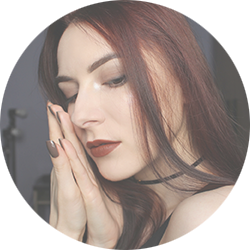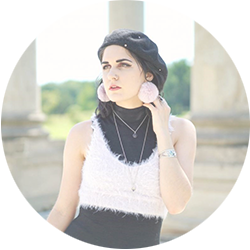







Welcome Back
Sign in to be closer to your community!
Follow other divas, like and comment
on their posts, message them, and see
who loved your posts!
Invalid username or password
You have not verified your account by clicking on the link we sent you via email. Please check your email folders (including your Spam folder) and click on the verify link sent.
Email is required
Password is required








Join FashionPotluck.com
Create your own profile in order to create content, follow other divas and like their posts, use our own messenger, and be a part of a growing international women community!
WELCOME TO OUR COMMUNITY
Fashion Potluck -
the first social media
platform for women.
You are free to read/watch & create content,
express your true self, and interact with others.
Join for free
Already a member? Log in here.
Purchase Alert
Dear Queen, you can only buy from one seller at the time. Please finish this purchase first in order to buy from another FP member
Comments
Please select one platform to continue
Please select one platform to continue
Please select one platform to continue
Please select one platform to continue
Please select one platform to continue
Please select one platform to continue
Please select one platform to continue
Please select one platform to continue
EDITOR APPROVED
You are wondering what is this 'Editor Approved'?
Well, this is pretty awesome! In order for the post to qualify and receive this accolade, it has to have a minimum of 700 words and two images (at least one original).
Receiving this accolade means two things: 1) Your content is amazing! Good job! 2) Your content qualifies for our monetization program. Every week two of the most read posts receive monetary rewards.
Have the badge & want to monetize your content?

LIFESTYLE


Over the years I’ve been practicing as a therapist, little has fascinated me as much as the transformative power of metaphor and narrative.
Early human beings would gather around the glow of a campfire and they would learn by listening to stories. Before we could write, important messages needed to be preserved within a memorable narrative in order to endure the passage of time. Today the light from our digital campfires glows brighter and reaches further than ever before, but the art of passing meaning from person to person remains the same.
Good stories involve us emotionally. Because of this, they’re able to educate in a deeper way than raw data or facts. Narrative and imagery can slip unnoticed passed our critical defenses and sow seeds of meaning in the deepest recesses of the mind. Our parents, grandparents, and teachers all knew this, and great therapists and healers use the same methods to spark our imagination and stimulate change.

The story I’d like to share with you here originally belonged to a man named Rafael Bejarano; an altruistic soul who traveled the world making music and devoting his time to charity. Rafael touched the lives of many but he can no longer tell his stories because he was senselessly shot and killed in Egypt four years ago.
I was gifted these words by Rachel Moore; a fellow cognitive hypnotherapist and old friend of Rafael’s. Rachel passed this story on to me at a time when I most needed to hear it, and in that moment I experienced one of those wonderful shifts in perspective. This simple idea changed the world in which I was living and I hope that it can do the same for you.
For today, Medium is my campfire and I invite you to pull up a log.
Rafael’s story
There are three colors in this world: green, orange and yellow.
Green:
Only when you are being fully, wholeheartedly and unapologetically yourself will you know the people who are green for you.
Green are those who understand you; the people who admire your principles and who are inspired by what you do. Green people share your passions and your interests and they will cheer you on when you choose to be your unrestricted, authentic self.
Orange:
However, when you dare to give up the temptation to censor yourself in order to fit in, you’ll also expose the people with whom you don’t see eye-to-eye. When you fight for your principles and live according to your own philosophy, you’ll always discover some people who simply aren’t on your team. They’re not interested in pursuing the same goals and they don’t find value in the same places that you do. Orange is inevitable when you choose to be green for yourself.
Yellow:
Then there’s yellow.
Yellow is a world of fraudulence and falsity. These are the people you aim to please because you feel like you ought to or the people you are friends with for some reason other than friendship itself. A yellow friend could be someone who’d invite you to the party just to make up the numbers. They are the people who somehow manage to leave a bad taste in your mouth whenever you air kiss them goodbye.
Yellow doesn’t particularly spark your interest or inspire you to spend time with them. Yet, for one reason or another, you think you probably should.
The only color to get rid of is yellow.
Green gives you energy, love, and support. They bolster and nurture your self-confidence and they will join you on a journey to fulfill your potential.
Orange validates you. They serve to highlight your principles and remind you of your purpose. Orange can prove that you aren’t weak-minded; they test your resolve and harden your skin… and that’s a good thing.
So don’t fear orange. Orange is the natural result of voicing your truth. Just remember, when conflict arises, that if you are fighting your corner from a place of authenticity and congruence, then that conflict is OK. It can be uncomfortable of course, but not as uncomfortable as walking away from a situation and despising yourself for compromising on what you hold dear.
In a yellow relationship, you don’t allow yourself to fully be yourself because you fear that in doing so you might just discover that the person you are devoting your energy to is actually orange. But it’s yellow who will drag you down, and they’ll do so while maintaining the facade of friendship.
Ultimately, a yellow relationship encourages shame because the people you feel you can’t be yourself around send you the message that it’s not OK to be you… and that’s not OK.
So have the courage to embody your genuine self; flaws, vulnerability and all. Speak up when you have something important to say and know that as long as you are able to truly listen to how you feel, then you can always be honest with others. Any emotion that comes from a place of congruence is valuable, and by expressing those feelings, you can make the world a better place for friends as well as for yourself.
The only color to get rid of is yellow.
Originally published here.
Fight: Win Freedom From Self-sabotage
A book on the psychology of self-sabotage and how to take control.
Comments
Related Posts
- 9 Things No One Tells You About Invisalign, But You’ll Wish You Knew Sooner by Monica Quinn 0
- Keep Diabetes in Check: 6 Fiber Superfoods You Should Eat by Monica Quinn 0
- The Ultimate Breakdown of Taylor Swift's Reputation Looks by Natalie Lancaster 0
More Posts
- Abiti da Sposa 2026: Eleganza Moderna, Tradizione Italiana e Tendenze da Non Perdere by Angelo Sonnino 0
- How to Write SEO Optimized Articles in 11 Steps? [Guide] by tools tools1 0
- Abiti da Cerimonia e Abiti Lungi: Versatilità Elegante nella Moda Femminile by Angelo Sonnino 0
Vote content out
Reason for voting this content out?
Reason for voting this content out?


 Login with Google
Login with Google Login with Twitter
Login with Twitter






 by
by
Add Comments